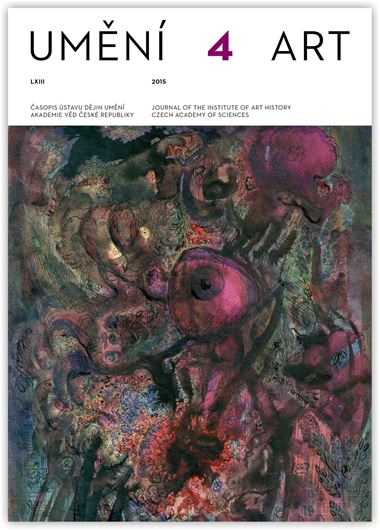Jana Peroutková
Transforming Babylon into Jerusalem: Chronology and dating of the architectural sculpture of the Church of Our Lady before Týn in the days of the Luxembourgs
The article focuses on the architectural sculpture of the Church of Our Lady before Týn in the Luxembourg period. It re-evaluates the surviving sculpture in terms of form and dating, using recent results from dendrochronological tests. It also addresses the chronology of the sculptures, the involvement of individual sculptors, and iconographic and iconological aspects of the historic monument. The sculptures on the north portal and the sedilia can be seen as a synthesis of contemporary European artistic approaches, illuminated by gains from the north Italian environment of the post-Pisano period and the new Franco-Flemish Realism. These experiences however are integrated into the foundations of Central European sculptural output as we know it from centres of Parléř’s operations. The nature and iconography of the work on the north portal date it to the political and intellectual environment of Prague in the 1360s / early 1370s. Its untypical iconography may be derived from the phenomenon of the ‘new piety’ and its closely associated reform-minded intellectual background. The aspect of form too, in the context of central European sculptural output, assigns these works to the turn of the 1360s and 1370s, although the vaulting of the portal was not reached until later. The northern sedile, which can be seen to have been inserted secondarily, was certainly a reaction to the ascent of the young King Wenceslas IV who moved to the immediate vicinity of the Týn Church soon after his father died. This is confirmed not only by the coat of arms with the imperial eagle in the floral border of his gown but also other iconography closely linked with early emblems of the Wenceslas period. We can assume the sedile belongs to the beginning of Wenceslas’s reign, the early 1380s. The date of the southern sedile can be deduced from the progress of building works, which would assign it to the early 1370s, like the work on the Treasury corbels. The architecture and reliefs of the portal, sedilia, corbels of the Treasury and small corbel of the north aisle were strikingly coloured in polychrome. This colourfulness can still be seen in some places, and could serve as a basis for a proposed colour reconstruction.
Full-text in the Digital Library of the Czech Academy of Sciences:
https://kramerius.lib.cas.cz/uuid/uuid:bdf299aa-faff-412f-b461-458f381d25e3
< back

